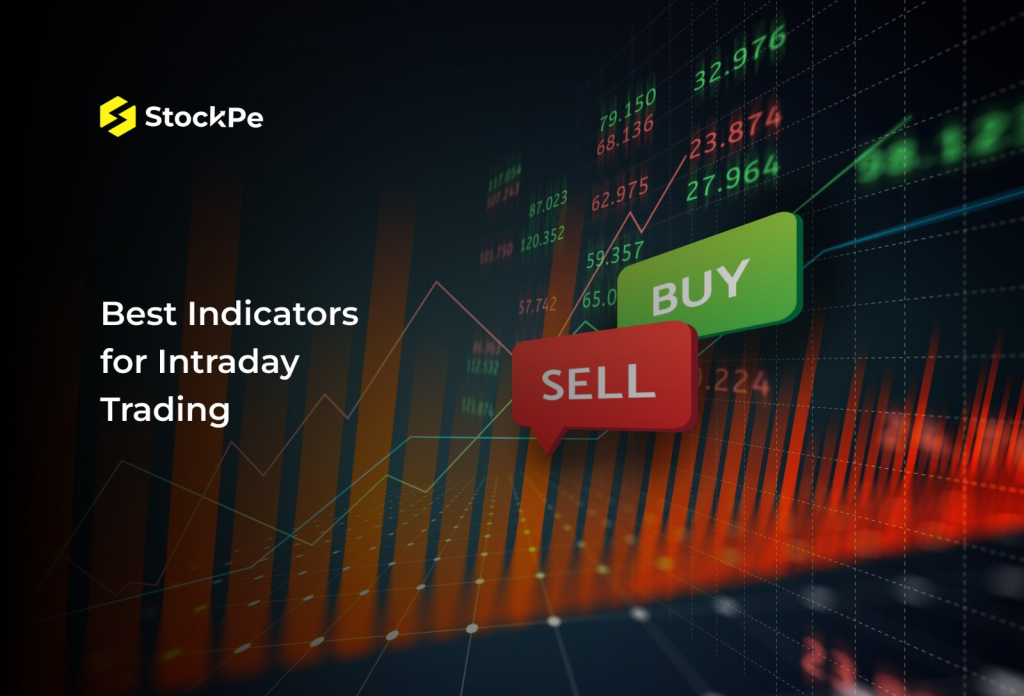Introduction
Intraday trading is trading done within the same trading market day. In other words, the buying and selling of stocks, commodities, currencies and ETFs occur on the same day. Intraday trading is also known as day trading because stocks are impotent to be held. Throughout the day, prices of the stocks see many fluctuations based on market trends, and intraday traders try to earn profit by buying and selling shares according to their judgement.
Traders highly trade in Intraday, as it provides profit by buying and selling shares. For example, at the start of the market, Mr K purchased 500 shares for 250 rupees, and within a few hours, the price of the shares climbed to 300 rupees. Mr K made a profit of 25,000 rupees in just a few hours.
Intraday trading is possible through online platforms. Intraday trading has to be bought and sold on the same day. If not acquired or sold on the same day the broker will convert your position into delivery trade.

Following are the key features of Intraday Trading
Intraday is a boom to traders as it allows them to enjoy huge amounts of profit through little investment. However, Intraday has certain features which should be considered by trading to avoid any risk and earn maximum profit.
Intraday is a boom to traders it allows them to enjoy giant amounts of profit through little investment. However, Intraday has some features and should considered for trading to avoid risk and earn maximum profit.
● The specific option is available for Intraday. After selecting for intraday, the buying and selling of stocks trading should be on the same day.
● In intraday trading, you cannot have ownership of stocks as it has given the movement on the same day.
● As per guidelines provided by SEBI, leveraging can be possible through your brokerage, by which you can make higher moments in your stock and earn more profit.
● The main aim of Intraday is to reap profit from price movements.
● Intraday trading is more beneficial to liquidity shares, as it is highly volatile due to market fluctuations.
● Profit is gained from Intraday trading if invested in highly volatile stocks.
Benefits of Intraday Trading
Intraday traders enjoy various benefits while trading and it helps them to earn profit at the end of the day, only if they have studied the market trend and price movements.
● Work on Leverage:
Leverage is similar to getting a loan from the bank. Likewise, with intraday trading, if traders fall short of money, they can ask for extra money from their brokerage. The leverage margin can range from five to ten times the money invested in your stocks. After studying your market investment and the possibility, the brokerage grants leverage and intraday traders can increase their limit of profit gain from the market.
● Minimise Risk:
Buying and selling stocks, commodities, currencies, and ETFs happens on the same day. Intraday traders can receive the benefit of risk-free trading. After market closing, the price of stocks may be affected by the company’s financial policy or any decisions made by the company on the next day, if the market opens on negative notes, intraday traders will not face any risk as traders have to deal on the same day they can be worry-free about the price fluctuations on the next day.
● Option available for Sell first and buy later:
Intraday is also possible in a bear market with the option to sell first and buy later. Generally, all the traders follow the buy first and sell later strategy but in intraday trading, traders can enjoy the benefit of the sell first and buy later option to earn the maximum profit possible.
Major Intraday Trading Indicators:
Intraday trading indicators provide insights to intraday traders while trading. It is helpful for technical analysis, to know market trends and to help with stock performance. Major intraday trading indicators that are useful for traders are Oscillators (RSI and stochastic oscillators), Moving averages, Bollinger bands, Moving Average Convergence Divergence, Standard Deviation and Commodity Channel Index.
● Oscillators
Oscillators work on price fluctuations seen in the stocks. Oscillators are classified into 03 criteria RSI, stochastic oscillators and momentum oscillators. Momentum oscillators are used for trending decisions when any stock faces an oversold or overbought situation. The share price movement and strength are measurable with the help of a momentum oscillator indicator. It can also help to reverse any decision or to pull out the stock if any heavy changes appear in price.
The stochastic oscillator indicator is useful for studying the closing price of the stock and the current price range. Through the stochastic oscillator indicator, intraday traders can trade in stocks based on price variation and try to earn a maximum profit before the end of the market.
Another intraday trading indicator, Relative Strength Index RSI to analyse the speed and strength of the price fluctuations. While studying the RSI chart, intraday traders can quickly change their decision as prices fluctuate in shares. It also provides insights into the oversold and overbought of stocks for trading decisions.
● Moving Averages
Moving averages provide a clear picture of price data through which price trends and fluctuations can be easily accessible. Moving averages are of two types SMA and EMA.
SMA stands for Simple moving average. It works to look into the average price of a stock for a specific period and thus provides insight into price fluctuations.
EMA stands for Exponential moving average. It gives more importance to the present price rather future price. It weighs and provides significance to the current price.
● Bollinger bands
One of the technical tools used as an Intraday Trading Indicator is Bollinger Bands. It is used to analyse the moving average, upper and lower band. By getting the price ranges, intraday traders can estimate the price fluctuation and cable to grab a potential opportunity within bands.
● Moving Average Convergence Divergence (MACD)
Moving average convergence divergence is a helpful tool as it provides the trading signals to buy and sell the shares by support and resistance levels. MACD provides a chart with price movements. The chart provides information about the momentum and trend direction of the price. As the price moves whether high or low, it signals whether to be bought or sold.
● Commodity Channel Index (CCI)
The Commodity Channel Index provides insights into overbought and oversold shares and potential trend reversals. CCI also works as a security deviation from the average price. Traders use CCI to grab market opportunities by evaluating the prices and potential changes in the market.
● On-Balance Volume (OBV)
On-balance Volume known as OBV gives the exact price momentum of the shares regarding crucial highs and lows. It is helpful to measure breakouts and breakdowns during potential markets.
Conclusion:
Intraday trading is a way to earn money from the share market but only if it is done with the help of its Indicator. Intraday trading indicators provide the depth logic and market fluctuation sight of share prices, if followed thoroughly then there will be very little chance to face failure. For intraday trading brokers charge extra, the charge varies with different applications. Intraday trading charges start from 20 rupees per order or 0.3% of the invested amount, further as per category different charges are applicable.
FAQs
1) Difference between regular trading and Intraday trading?
– In regular trading, traders can hold stock for the next day and own ownership of stocks. In Intraday trading, stocks should be traded on the same day and do not own ownership.
2) Is it possible to hold stocks in Intraday trading?
– No, it is not possible to hold stocks. If you fail to trade on the same day, stocks will be converted into delivery trade by your broker on the next day.
3) Which indicator is most useful in Intraday trading?
– Oscillators (RSI and stochastic oscillators), Moving averages, Bollinger bands, Moving Average Convergence Divergence, Standard Deviation and Commodity Channel Index indicators are useful in Intraday trading as all indicators have their requirements.
4) Is Intraday trading safe for beginners?
– Intraday trading requires knowledge of the market, so it is risky for beginners to direct trade in Intraday.
5) Are Intraday trading indicators reliable?
– Indicators can be used to study the market position and can help decide your next action.





